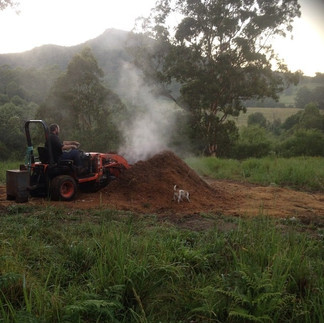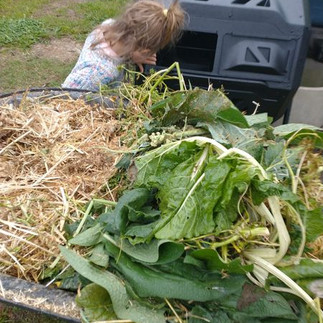Healthy soil = Healthy plants
Making your own compost can be quite labour-intensive or fairly simple, depending on your chosen method. Finished compost is dark and rich in colour with a pleasant, earthy smell and is easily applied to the garden by working into the soil or blending through seed-raising and potting mixes. Composting is all about creating the right balance of ingredients and managing the right conditions for organic matter to decompose and return to the soil, just as they do in nature.
What can I compost? There is a long list of items suitable for the compost, the general rule is if it came from a natural source, it is suitable for composting.
The key components are:
Carbon- includes brown or dry materials. Nitrogen- includes green or moisture-retaining materials. Oxygen or aeration aids the decomposition process and can be achieved by turning, forking or tumbling, Moisture in the right amounts to maintain activity without being too wet and causing anaerobic (no air) conditions. Bacteria and Fungi help break down the material and help to decompose woody material.
There are many ways to create compost depending upon your situation and the resources available. Some methods can include:
Hot composting (check out the Berkeley method)
A compost heap or bay is a very effective way of processing large amounts of green waste and/or food waste materials and therefore creating a larger volume of finished compost. Perhaps you might only make a heap a couple of times per year by gathering a large amount of compostable materials at once. We like to do a heap pile timed at the end of a growing season using garden pruning’s and soiled animal enclosure bedding. You will require outdoor ground space of at least 1 metre square; old pallets make for a great compost bay and help to keep the heap contained and heaped to an ideal size of 1 cubic metre which helps sustain heat the whole way through the process. Create layers with your materials a bit like a lasagne. The carbon to nitrogen ratio is crucial with this method for the pile to reach optimum heat in fast time. 25-30 parts carbon to 1 part nitrogen by weight is recommended. Turn for aeration with a compost fork and add moisture as required The process can take as little as 4 weeks depending on the time of year and carbon & nitrogen sources.
Compost bin- A compost bin is great way to process a small to medium amount of garden and food waste materials. There are lots on the market and also plenty of DIY options, however they all work similarly. Compost bins are a large vessel slightly dug into the ground with an opening at the top and a lid. Organic materials are deposited via the opening at the top. They are generally low maintenance, although you do have to turn the contents over with a shovel or compost turner regularly to maintain aeration and add moisture as required (see squeeze test below). Once the composting process has been completed, the bin is lifted up and the compost is harvested.
Compost tumbler- Rotating compost bins are a user-friendly way to make small batches of compost from garden and food waste materials in a fairly fast time. This is mostly due to adequate aeration and rotation. Compost tumblers vary in size and shape, but they all work in much the same way most allow for adjustable airflow which is great in helping to monitor oxygen control. Moisture is still an important component (see squeeze test for moisture) Look for a tumbler with dual chambers to allow for continuous composting. One side can be processing while the other side is available to deposit further waste materials. Emptying is easy by opening the chamber and turning upside down to collect.
The squeeze test for moisture* A good gauge for adequate moisture is to squeeze a handful of material; you should see water well up around your fingers but not run off, it should more drip, similar to a damp sponge. If too moist and soggy incorporating more carbon (brown) material will help to rebalance. If too dry, add water for moisture.
There are many other composting methods depending upon your situation and the resources available. These can include cold composting, composting in sitchu, vermicomposting (worm farming) even chickens are great composters. If making your own soil isn't an option, I would recommend searching locally for compost available in your area or visiting a local nursery for advice.
Happy composting!









Kommentare